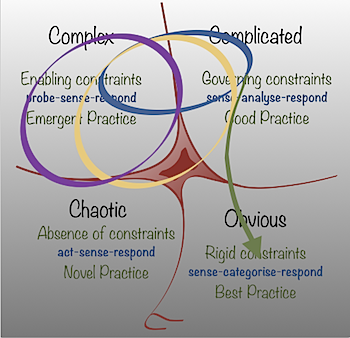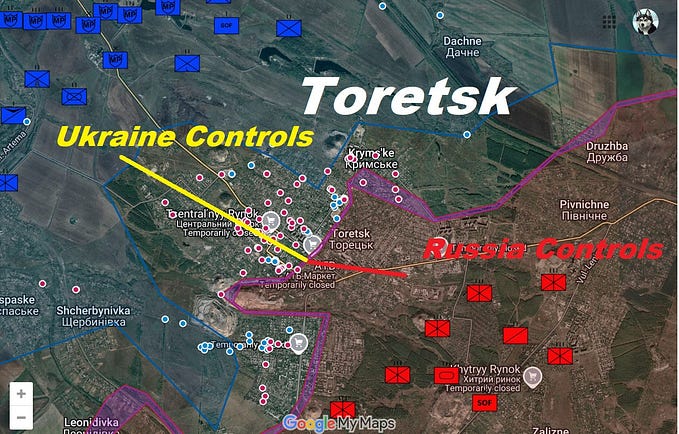Keep Moving, Seek the High Ground, Stay in Touch

Ecosystems are ever-fluctuating networks of actors who become stressed when they lack the flexibility to adapt to change which, ironically, is the only constant. Yet many organisations (tightly-coupled networks of actors) aren’t dynamic enough to ride the current waves of change [1] for they haven’t increased the variety of its people, perspectives or ideas — they’ve hired for alignment, rewarded for replication and harvested by familiarity instead — making them rigid and less able to respond to the slings and arrows of outrageous fortune.
Dynamic ecosystems demand dynamic organisms — it’s survival of the most flexible
The US Marines have a plan for when battlefield plans break down: keep moving, seek the high ground, stay in touch. It provides marines perhaps trapped behind enemy lines in a fluid and rapidly evolving, dangerous environment a guiding principle, or heuristic (rule of thumb) for action when facing the unpredicted. Importantly, it also allows ‘the Centre’ to estimate frontline developments even when they can’t see what’s going on — ensuring coherence of the whole operation even when the situation starts unfolding in unexpected ways.
Nature also operates with heuristics: super fecundity (over-population) triggers variation (in organisms’ physical or behavioural patterns) from which selection is made (who eats, drinks, mates) — what might be called Nature’s algorithm.
Heuristics differ from rules in an important respect: they don’t dictate what should happen but instead provide guidance when gripped by the unknown. The human mind has evolved with multiple, unconscious, heuristics — cognitive biases — that help (and hinder) us in recognising patterns in the confusion around us, helping us make sense of things so we can act [2]. At the meta-level, organisations, which have multiple actors’ heuristics in play stand a greater chance of overcoming individual biases and instead harnessing the collective wisdom of the crowd.
Crucially, heuristics are both flexible and measurable. While rules dictate action in all possible circumstances — forcing people to stop and consider consequences before breaking them — heuristics only suggest plausible courses of action, while allowing some degree of necessary interpretation. The US National Parks Service, for example [3] suggests local rangers extinguish man-made fires, but let natural ones burn themselves out (as part of the forest’s natural resilience building capacity) IF surrounding conditions are benign. Decisions taken (to extinguish or not) can later be measured against this heuristic — with outcomes either reinforcing or challenging the efficacy of the heuristic in use.
The Cynefin Framework [4] provides heuristics for action depending on your current context — where you are [5] — but also for navigating dynamic, changing ecosystems and extracting untapped value in uncertainty. Here [6] are a few critical heuristics for helping you navigate your organisation through an uncertain, dynamically fluctuating ecosystem.

INNOVATION HEURISTIC (blue loop) is the dynamic organisations should aim for: explore novel ideas in the complex domain through increased interactions and learn— through the use of safe-to-fail experiments — how to generate predictable outcomes that can be exploited in the complicated domain. However, the heuristic is a loop as a reminder to be vigilant: if you can’t harness the idea (i.e. it stops repeating — for example, some customers aren’t buying) then you need to move the idea back into the complex space — opening it up to more testing — before trying to scale it again.
SHALLOW DIVE INTO CHAOS HEURISTIC (yellow loop) is the critical reset many organisations need to make to shake them out of entrenched patterns of past success that often hinder future progress. Success breeds inertia and when organisations have become rigid a dive into alternative perspectives — such as exposure to real, unedited customer experiences (rather than cherry picking comments or hiding ‘the why’ behind simplistic numbers, like an NPS score) — can rattle people’s cherished assumptions strongly enough to kick start a new cycle of value-seeking.
BEST PRACTICE HEURISTIC (green arrow) represents a warning against the current epidemic of trying to make the temporarily good permanently ‘best’ practice. For it’s only those things that have genuinely been perfected and can’t be improved any further that should be moved here — for once they do they’ll undergo little, if any, further change. If it’s genuinely the one best way of doing things (e.g. operating theatre checklists) then forcing that on everyone can be a source of huge value — if not, then the inevitable change in the wider ecosystem is likely to snap it catastrophically as what is ‘ideal’ in one context can become an inflexible obstacle in another.
PERPETUAL BETA HEURISTIC (purple loop) is an approach to surfing volatility by remaining transitory in most things one does — constantly on the look-out for better ways of operating and rejecting anything that was done previously if it doesn’t seem right today. This heuristic suggests becoming comfortable skimming the edge of chaos to retain deep capacity for rapid adaptation. Start ups operate in this manner, which is why entrepreneurialism is so difficult to foster inside established organisations.
Cynefin Dynamics show us that ecosystems and actors in them are in a constant state of evolution as movement uncovers and exploits new value. Fluidity remains a stronger strategy than defending past advantages by building high walls — especially when ecosystems themselves are increasingly shifting; reacting to the external pressures of their own wider ecosystems that they are part of; evolving and opening up niches for new rivals to discover and exploit; undermining the very foundations of the fool’s walls we have built.
The illusion of certainty — hiding behind high walls of past inertia or suffering the tyranny of top-down biases — in an uncertain world is contained in the final element of the Cynefin Framework: the centre-piece — the domain of disorder. It’s here that organisations often find themselves — a ‘place of false confidence, where you assume you know how to act’ [7] based more on habitual or wishful thinking than from a true awareness of the surrounding situation. It is of paramount importance that organisations move out of disorder as quickly as possible —acting with insight of what is really happening and why (rather than what they wished was happening).
Unfortunately, the Duning-Kruger effect — those who lack awareness, lack the awareness to know they lack awareness — is the real enemy in many organisations today. Victory therefore will increasingly go to those leaders who recognise the boundaries of what one person can know in favour of a more networked intelligence that provides guidance on how to act according to the real situation being faced. And understanding the Cynefin Framework is the first giant step in developing such awareness.







